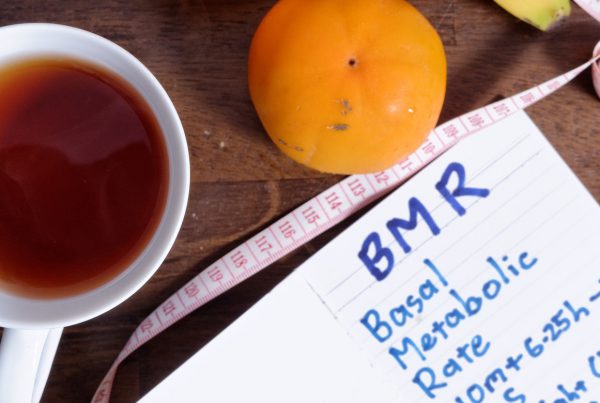If you’ve been trying to get in shape recently and you’ve been scouring the Internet for effective workout styles, chances are you’ve stumbled upon something called HIIT, which stands for high-intensity interval training.
Over the years, professional athletes and fitness buffs alike have sworn by this training method.
Whether it’s lowering fat mass or increasing muscle gain, you’re probably wondering if it’s the right workout type that will help you attain your body composition goals as quickly as possible.
Read on below for a closer look of this popular workout style and how you can use it to effectively attain your desired body composition outcomes.
The Lowdown on HIIT

High intensity interval training (HIIT) is based on the premise that short, explosive burst of activities can have a huge, lasting impact on your body composition. In a nutshell, it’s not about how long you’re exercising but rather how intense you’re performing the workouts within a certain period of time.
In a typical HIIT routine, you alternate between intervals of quick, intense bursts of exercise and short, sometimes low intensity, periods of rest. Here’s how the American Council on Exercise (ACE) describes HIIT:
Most endurance workouts, such as walking, running, or stair-climbing —are performed at a moderate intensity, or an exertion level of 5-6 on a scale of 0-10. High-intensity intervals, on the other hand, are done at an exertion level of 7 or higher, and are typically sustained for 30 seconds to 3 minutes, although they can be as short as 8-10 seconds or as long as 5 minutes; the higher the intensity, the shorter the speed interval. Recovery intervals are equal to or longer than the speed intervals.

Running HIIT-style involves intervals of 30 to 60 seconds of running near your peak of ability. You follow this almost breathless (but definitely not winded) running with a comparable cool-down period of walking. For instance, you can do a short sprint upstairs and walk back down four times in a row.
While there’s no specific set of guidelines as to how often you should do HIIT, alternating periods of high-intensity and low-intensity activities at least three times a week as part of your exercise routine is a good rule of thumb to reap its benefits. One study in the European Journal of Endocrinology reported that male subjects following an 8-week HIIT program experienced muscle gain and lost a significant amount of abdominal fat mass, even though the program included no weightlifting.
The great thing about HIIT is you can apply interval training to almost any type of workout — from interval running to doing explosive laps at the pool to your twice-a-week kettlebell routine. This means that you can continuously mix things up in your routine so you won’t get bored and give up on our body composition goals.
HIIT and Its Impact on Body Fat

Let’s look at HIIT’s impact on body fat.
HIIT has been shown to be effective in torching body fat more than other types of exercise. In terms of belly fat, studies found that HIIT workouts help reduce both visceral (fat mass around the organs) and subcutaneous (under the skin) fat.
Another study compared the results between a group of participants who committed to three days a week of high-intensity exercise routine and another group who did five days a week of low-intensity exercise. After sixteen weeks, the researchers discovered that the participants who committed to high-intensity exercise routine for three days a week lost more fat than the group who showed up for low-intensity steady-state exercise.
HIIT’s significant role in reducing fat mass is good news if you’re not seeing consistent results in reducing your body fat percentage (particularly that stubborn belly fat) despite your regular workout routine.
HIIT and Its Impact on Muscle Mass

As for HIIT’s possible role in building lean muscle mass, let’s take a look at the findings of a study published last year in the Journal of Diabetes Research.
The researchers compared the effects of five weeks of high-intensity interval training (HIIT) and moderate-intensity continuous training (MICT) among overweight and obese, young women in terms of cardiorespiratory fitness, body composition, and blood glucose.
Participants in the HIIT group performed 60 repetitions of high-intensity interval exercise — at 8 seconds of cycling at 90% of peak oxygen consumption, and 12-second rest on a cycle ergometer for 20 minutes. Meanwhile, participants in the MICT group performed continuous cycling exercise at 65% of peak oxygen consumption for 40 minutes.
In terms of lean mass changes, the researchers concluded the following:
“..the MICT group experienced significantly decreased total lean mass (TLM) and leg LM. Meanwhile, TLM and leg LM in the HIIT group were unchanged. ”
Based on the study’s findings, here’s what we know so far:
- HIIT may not be the most effective workout routine to build lean muscle mass
- HIIT, however, can help preserve or retain lean muscle mass, while MICT can potentially make you lose lean muscle mass if you’re trying to lose fat mass at the same time

One of the many benefits of HIIT is that it increase the proportion of fast-twitch muscle fibers over slow-twitch muscle fibers.
Why is this important? Fast twitch fibers are a main factor of your strength and speed. They are also very important to train in that if you don’t use them, you lose them, especially as you get older. That being said, you can see how important muscle gain is when you are young, in order to maintain your strength and speed (reflexes) as you age.
While HIIT may not be as effective in increasing muscle mass, it does offer potential benefits to achieve that sculpted look. However, if your main goal is to build muscle mass, bodybuilding or weight training may be your best bet. Here’s an in-depth look between bodybuilding and HIIT to improve body composition. You can note also that both these methods may be used in conjunction to help you to attain your desired body composition.
Additional Benefits of HIIT

Besides helping improve your body composition through fat mass loss, HIIT also provides the following benefits:
- Short yet explosive bursts of exercise may be more effective in boosting your V02 max— a measure of aerobic endurance— than performing the same exercise at a slower pace. This can help you to use oxygen more efficiently and increase exercise performance.
- Incorporating HIIT workouts into your exercise routine is more time-efficient. This study reveals that you get the same cardiovascular effects from traditional endurance training in HIIT in just a couple minutes.
- New research findings published last April concluded that HIIT improves glucose metabolism in muscles and boosts insulin sensitivity among type 2 diabetics.
- HIIT is perceived as a more enjoyable activity than moderate-intensity continuous exercise. This finding suggests that HIIT will likely promote long-term exercise adherence than other workout styles.
- In a 2015 study comparing the afterburn effect, also known as excess post-exercise oxygen consumption or EPOC, HIIT (as well as weight training) reigns supreme over regular cardio up to 21 hours post-workout. The more oxygen your body requires to return to its resting metabolic state, the more calories you burn. This means that HIIT can help you burn more calories even after a day (or almost) you exercised.
Making the Most of Your HIIT Workout

To help you accomplish and maintain body composition success, there are various types of HIIT methods to choose from — from the Tabata protocol to turbulence training. Plus, HIIT can be applied to almost every workout routine or fitness setup out there. You can do CrossFit, engage in bodyweight workouts, or even do HIIT with Pilates.
Regardless of the workout routine or HIIT method you prefer, you can make the most of your HIIT routine by sticking to the following best practices:
- Don’t forget to do some warm-up before you engage in explosive, high-intensity moves.
- Aim for at least three-to-five minute intervals completed at least six times. This interval has been shown to provide long-term sustainable results in a systematic review of studies on HIIT protocols that are most effective.
- Complement your HIIT routine with other workout styles or training programs such as yoga or trail running to keep things interesting.
- Incorporate as many muscle groups as you can. Using more muscle groups will help to burn more calories!
- Use your own body’s cues to gauge exertion level. For example, you’re doing it right if you can say single words in the middle of your HIIT routine but you should not be able to complete whole sentences. So if you still find yourself chatting it up at the gym in between reps and you’re not seeing results, maybe it’s high time to pump up the effort level a few notches.
- Watch what and how much you eat. The best HIIT routine in the world will amount to nothing in the long run if you’re not mindful of your diet and nutritional needs.
- If you have existing health issues, it’s best to consult with your doctor or healthcare professional first before engaging in HIIT.
It’s All About Consistency
To benefit the most from any form of HIIT, build a habit of doing it consistently. Even if you can only spare a few minutes, you can effortlessly incorporate these quick interval workouts to your day.
How about getting off your social media of choice for about half an hour to do HIIT? Perhaps you can do reps with your officemates during lunch hour.
The next time you feel like exercise is a chore or a task that you need to check off your to-do list, introduce HIIT into your workout routine! You might not know it but a quick, fun HIIT sesh may be the missing piece in bidding adieu (finally!) to your current body composition woes.
***
Kyjean Tomboc is a nurse turned freelance healthcare copywriter and UX researcher. After experimenting with going paleo and vegetarian, she realized that it all boils down to eating real food.
Source: https://inbodyusa.com/blogs/inbodyblog/how-to-use-hiit-to-improve-your-body-composition/




